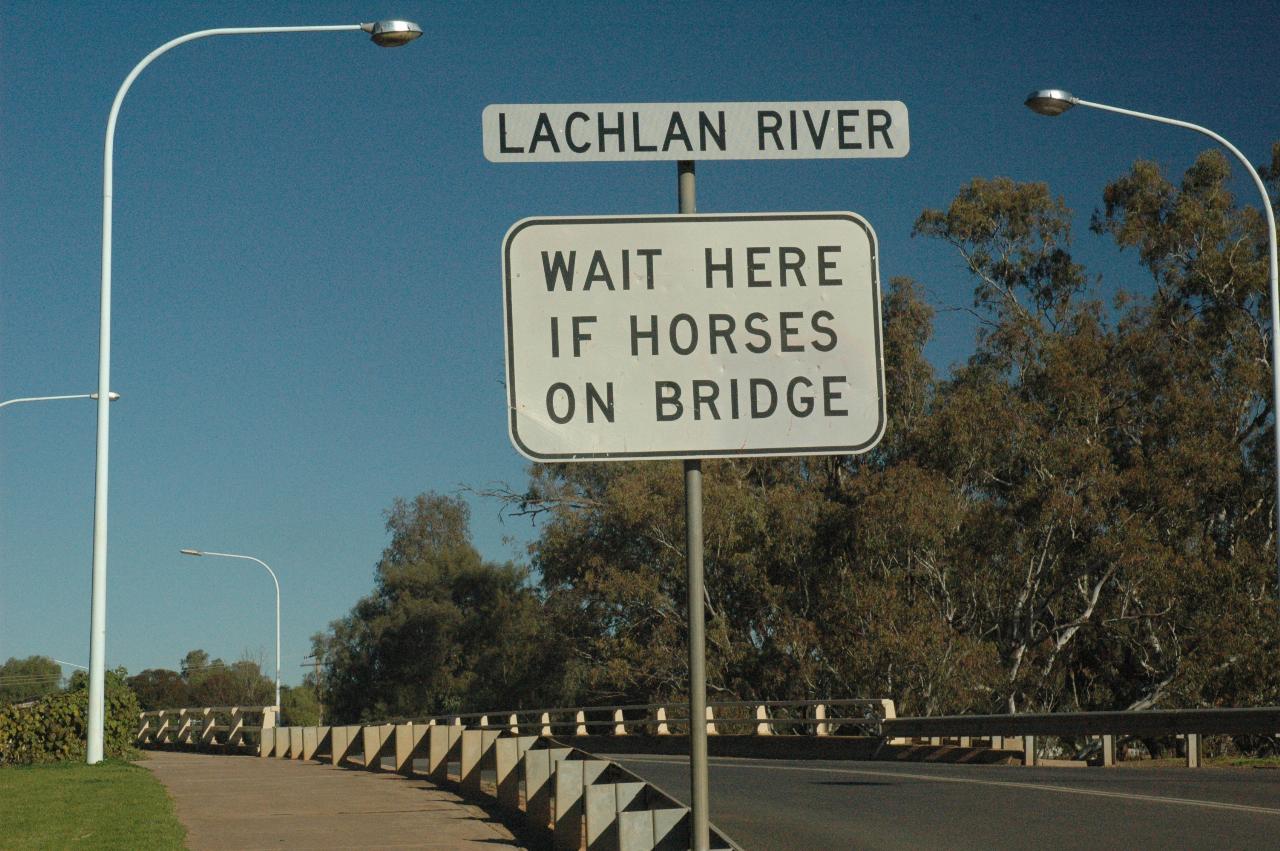
Having finished the telescope inspection, it was time to return to Parkes and check in to the motel for this night. After that, time to explore the area. Looking over the list of area attractions provided by the motel, I decided to go towards Condobolin, in part to see the Japanese Garden to commemorate the internment camp of World War II. Of course, the camp and garden are in COWRA, so naturally I didn't find them!
Mount Tilga (8 km to the north) is said to be the geographical centre of NSW.
Population is about 3500, and it's located 99 km west of Parkes, 463 west of Sydney.

In the spirit of drovers crossing the river, this was the first place I stopped. It's not often one sees a sign like this. Though it's more likley related to the horse facilities across the river from the town than the drovers mentioned above.
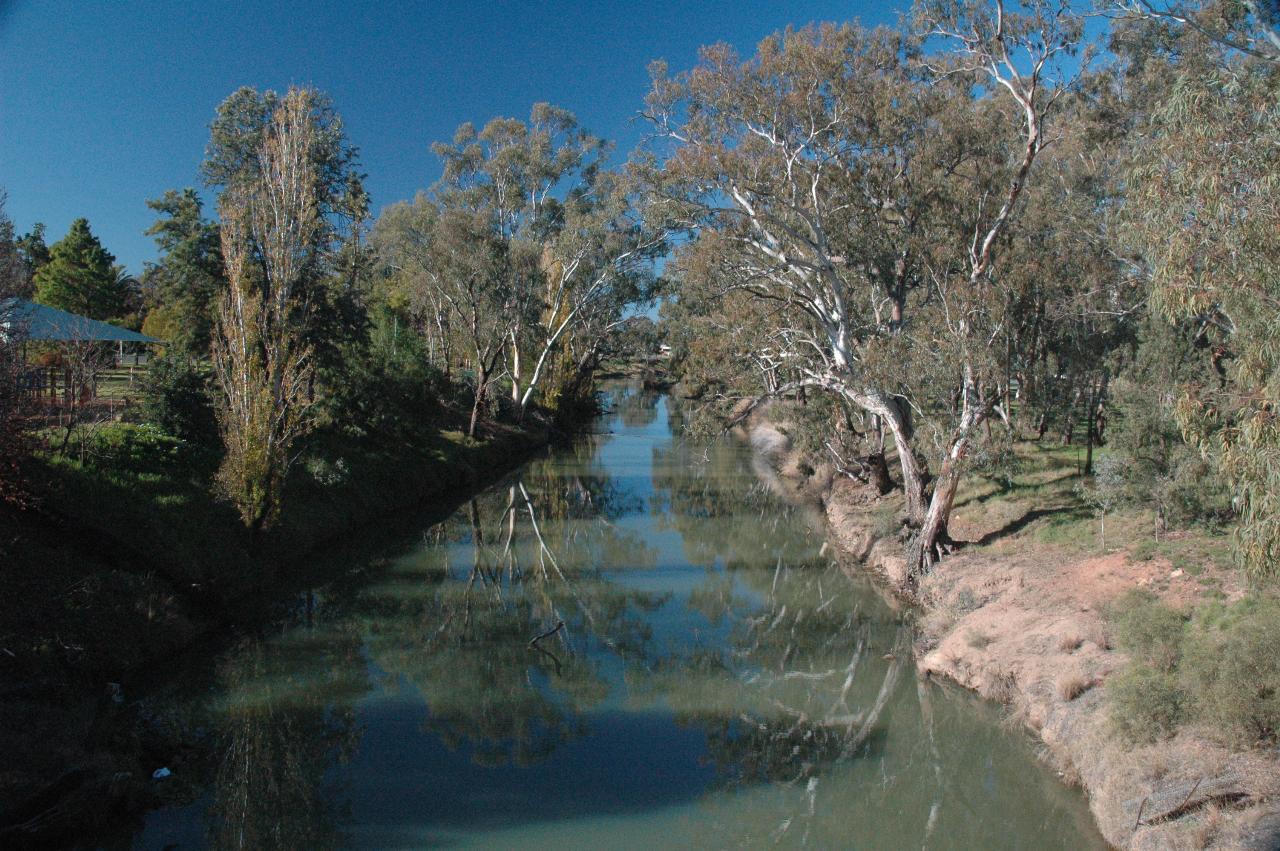
The view upstream along the Lachlan River from the bridge. The city park is on the left bank (the covered area is just visible among the trees) and the showgrounds and stables are on the right.
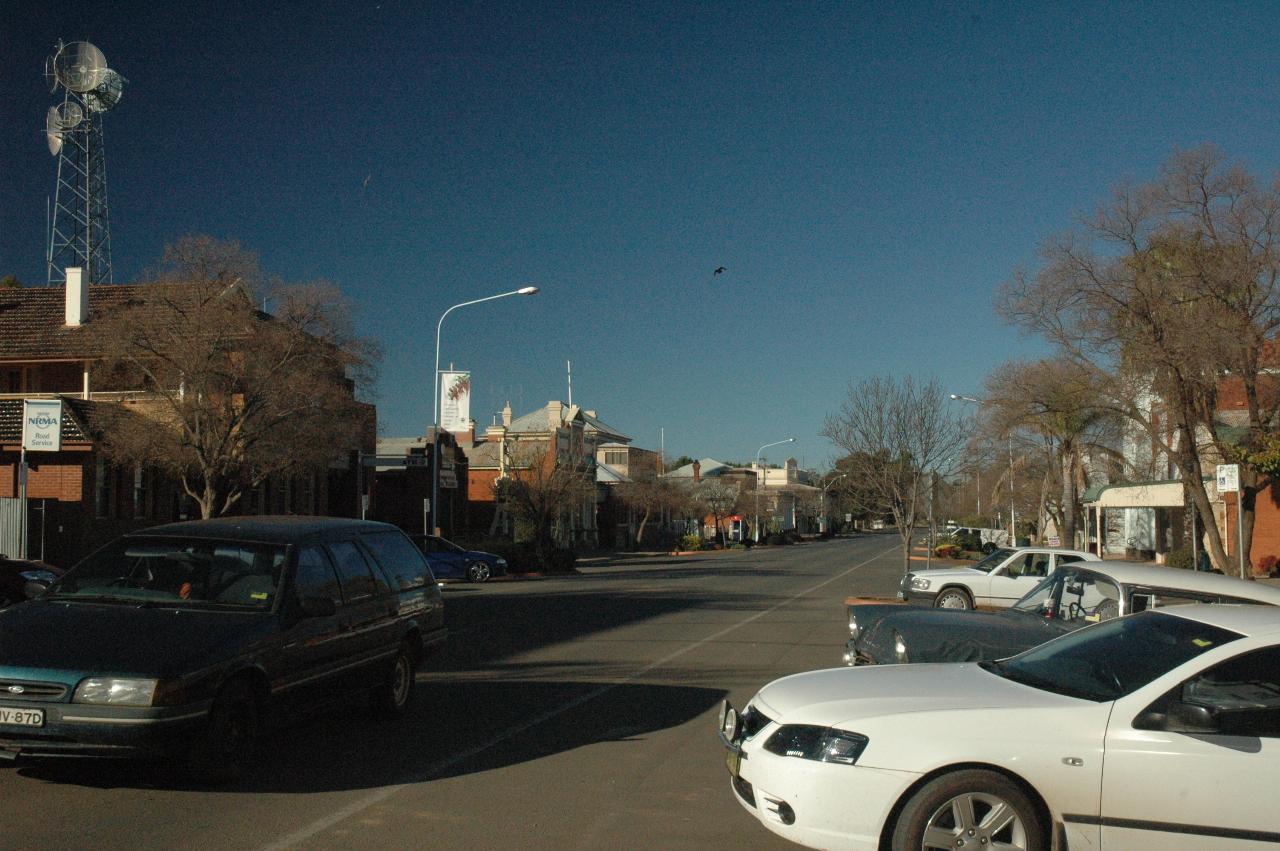
Looking east along the main street. It being a Sunday afternoon, there was not much activity around.
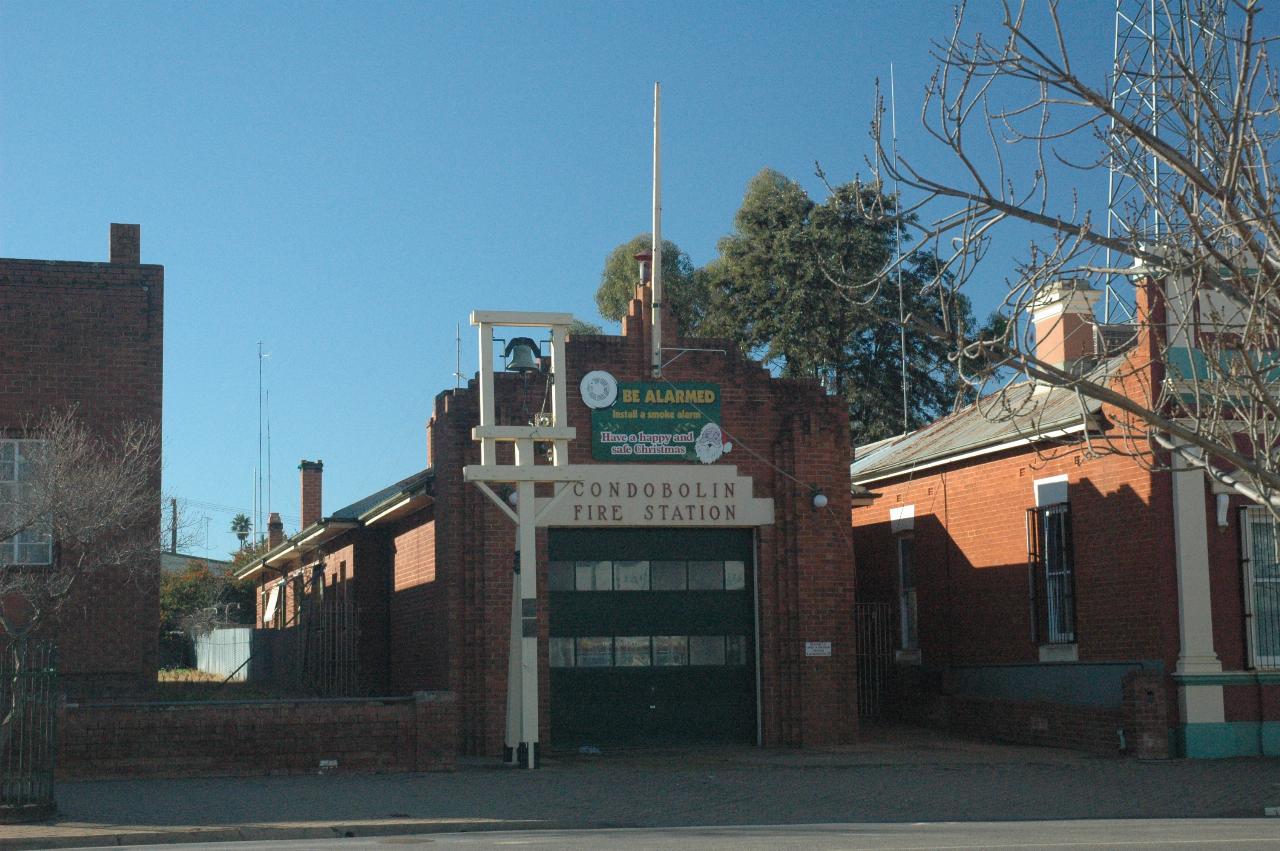
Moving along the street to the east is the Fire Station. Adjacent to that is the Town Hall or Shire Offices - it wasn't clear exactly which.
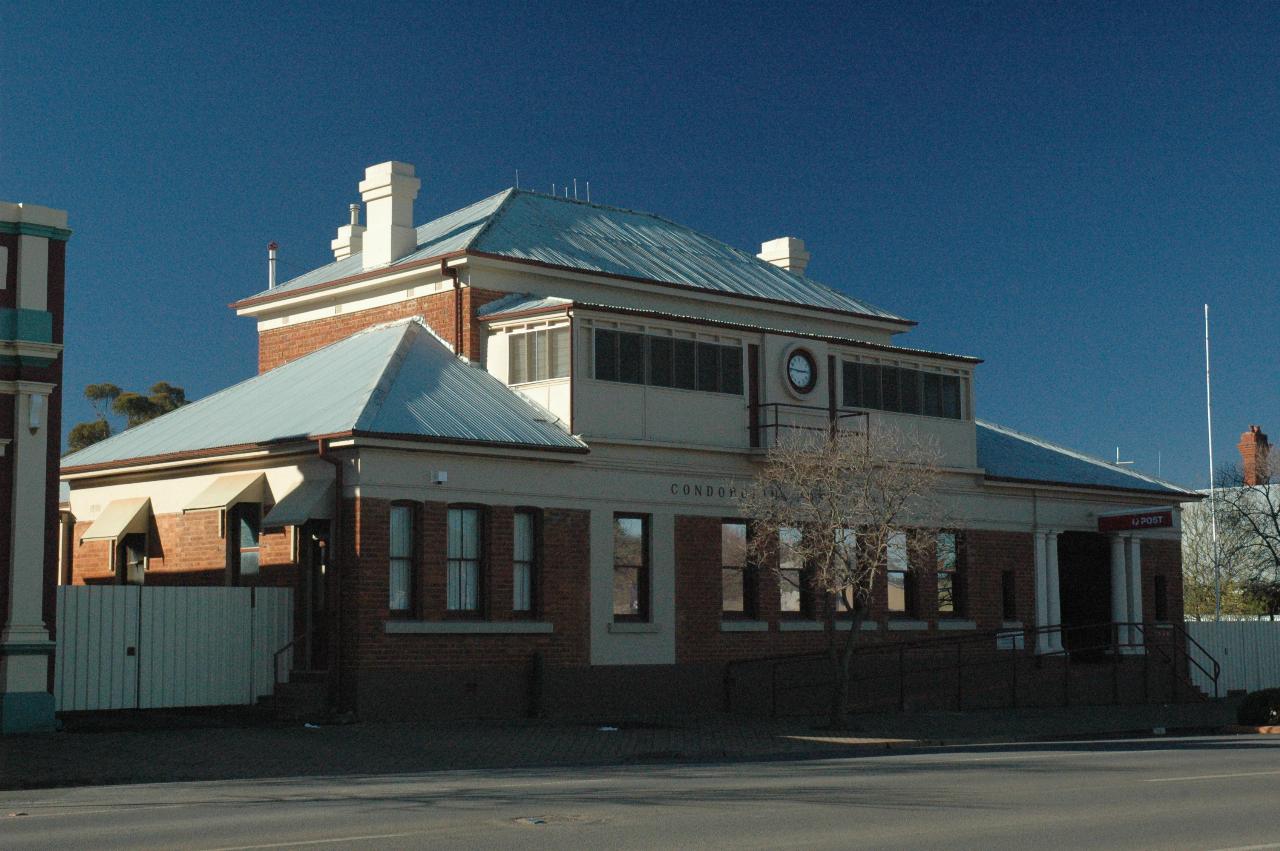
The Post Office. I'm not sure the section with the clock is original; it doesn't seem to fit the style of the rest of the building.
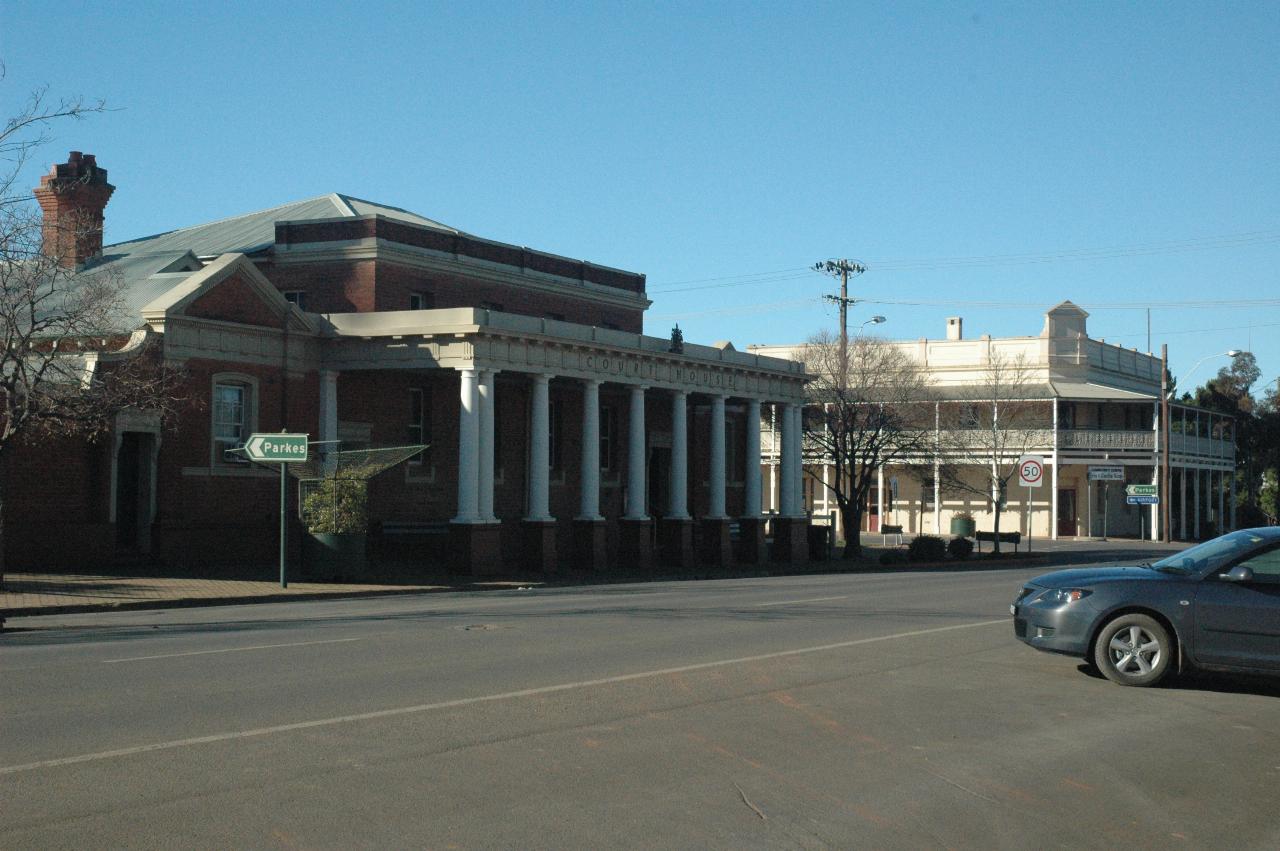
The Court House - another building of some status.
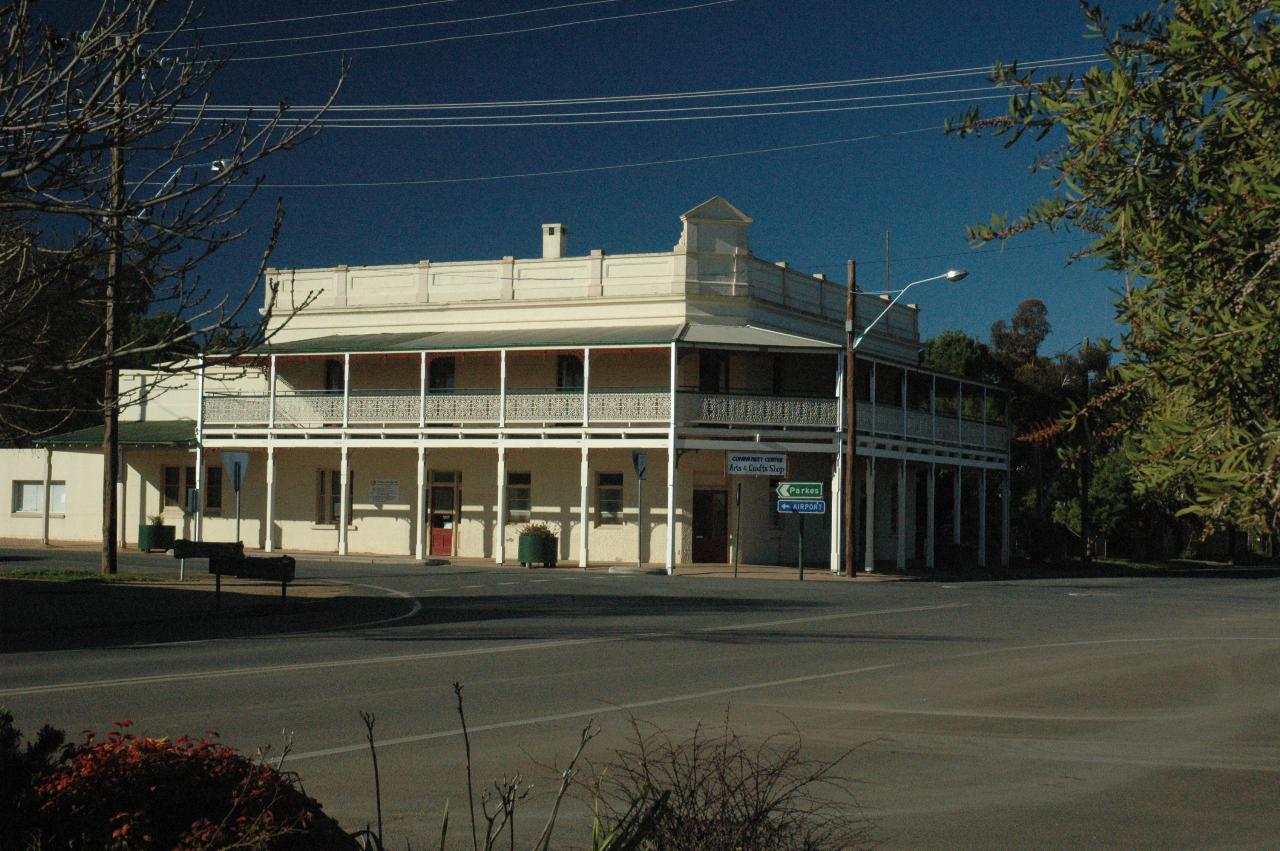
This former hotel was built in 1875. It is now a community centre featuring arts and crafts and historical displays.
The town was originally known as Currajong from the type of trees growing in the area. It was renamed "Parkes" in 1873 when Henry Parkes visited the town as Premier of NSW. Parkes was a major player in state politics, and pushed forcefully for the federation of the states, especially in the late 1880s and until his death in 1896.
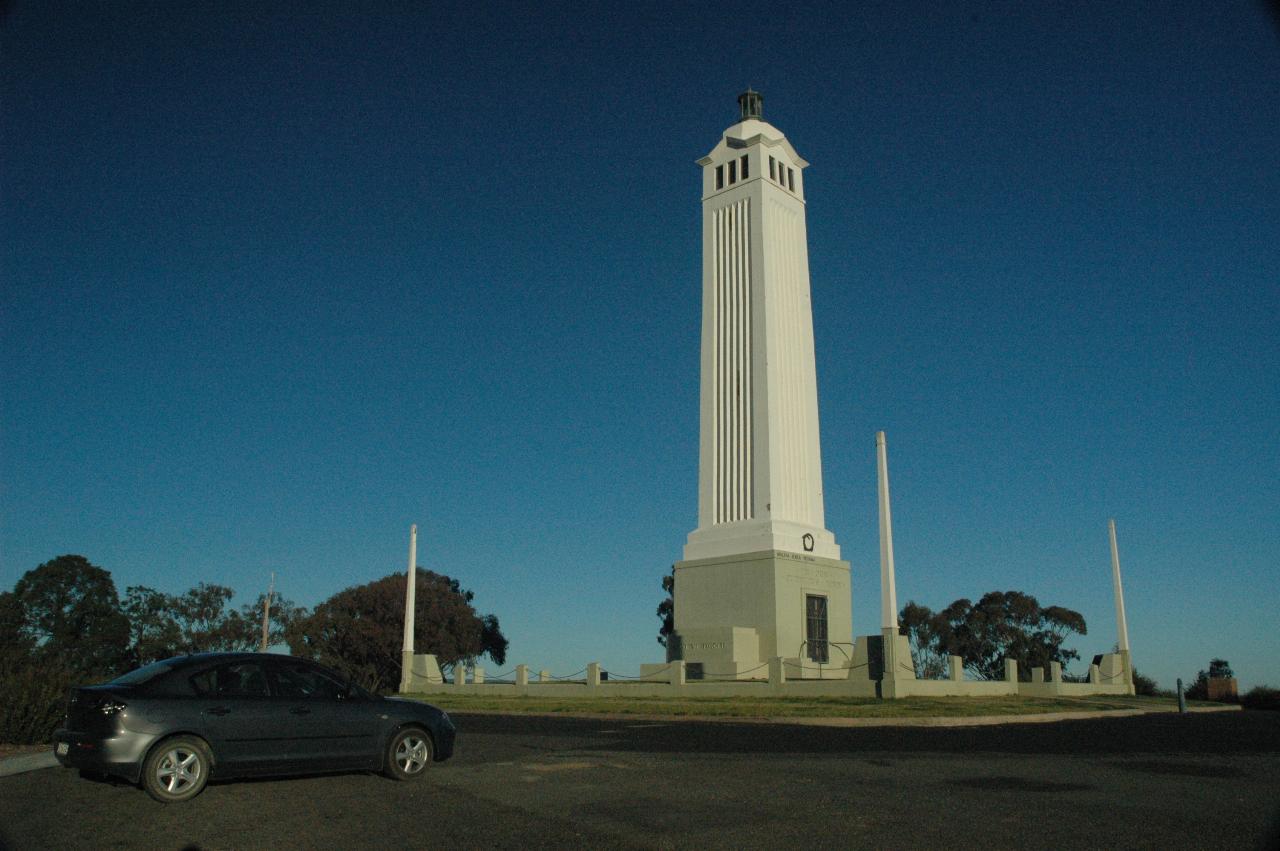
Memorial Hill is the highest point in town, and this monument is dedicated to those from the area who lost their lives during war.
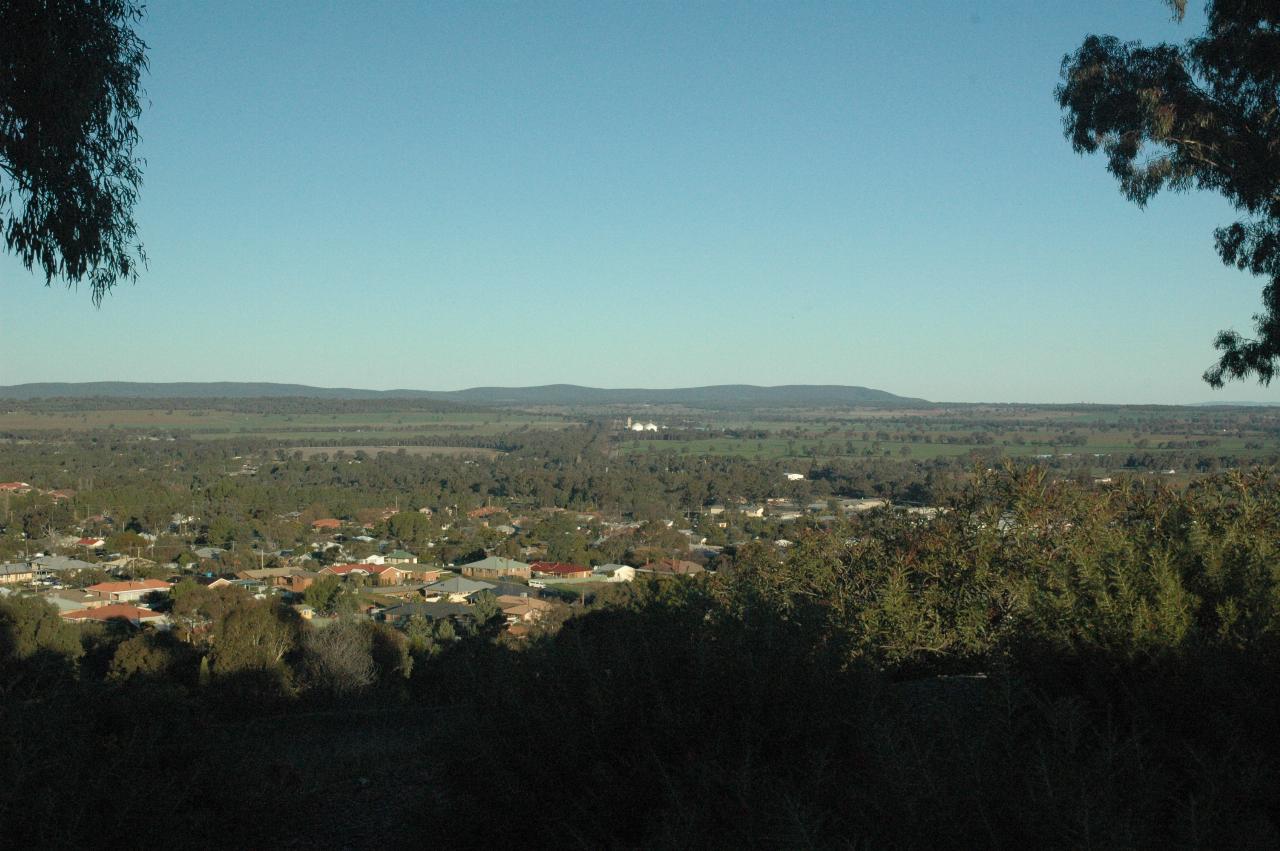
Looking south from the hill shows rather lush countryside.
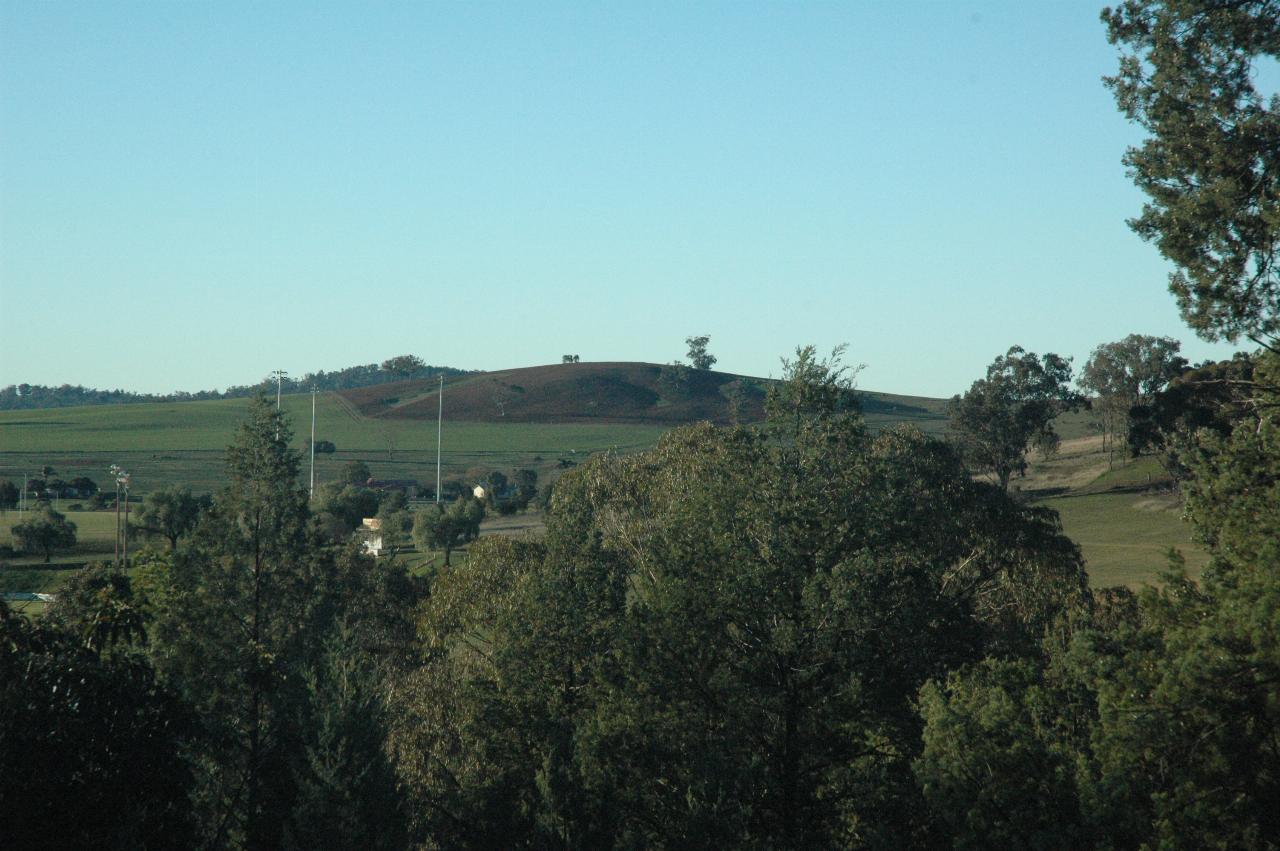
And looking north east shows how close farming comes to the edge of town. The hill in the middle had been recenly ploughed.
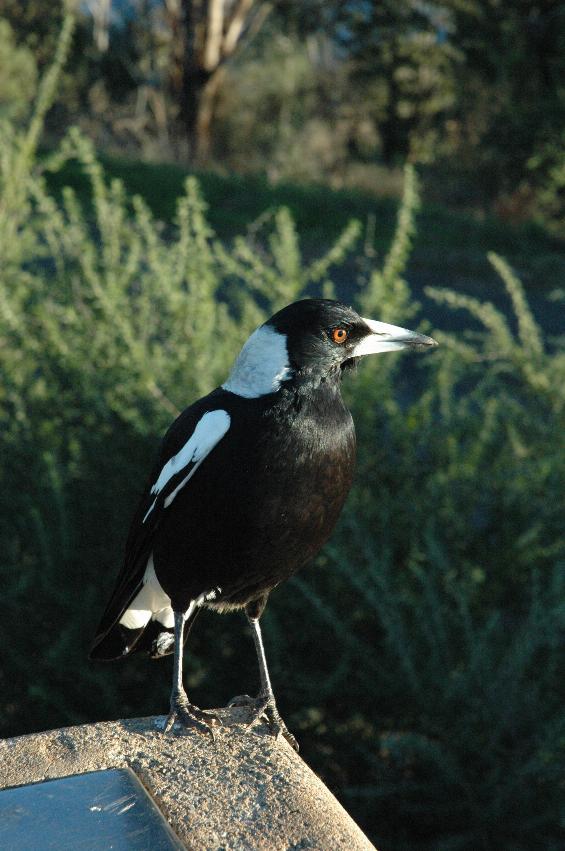
While taking some photos near a points of interest display, this magpie landed less than 50 cm away; I suspect it was looking for food! I disappointed it on that score, but at least I have this photo. Though perhaps I should have fed it as its "fee" :)
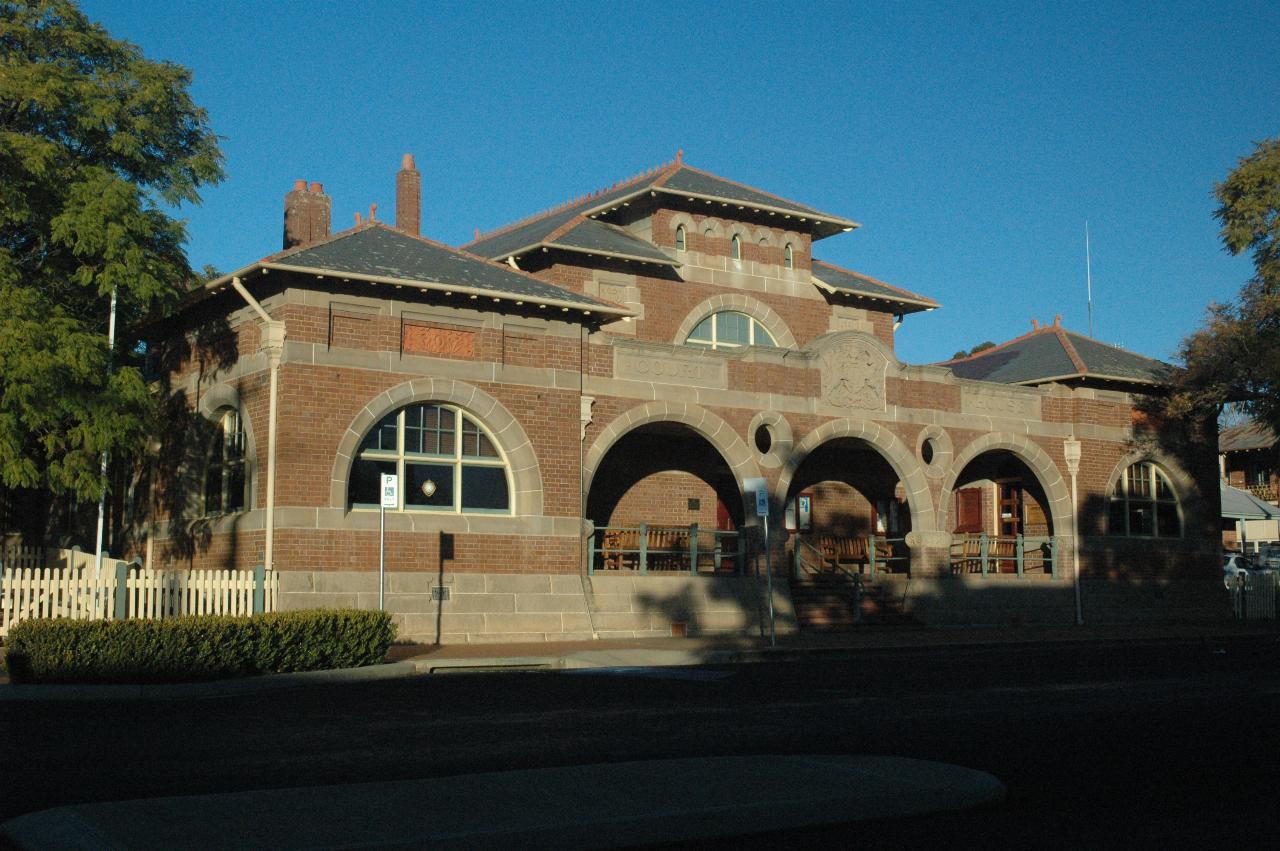
The Parkes Court House. Not as impressive as that in Forbes, or even Condobolin. It dates from 1895.
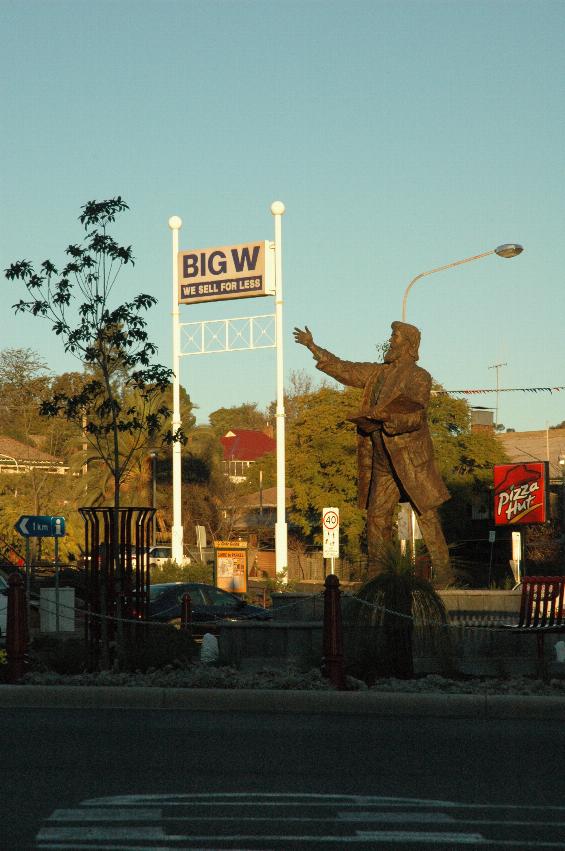
This statue of Henry Parkes is located on the main shopping street. This photo indicates that he is welcoming "Big W", which he probably would have done.
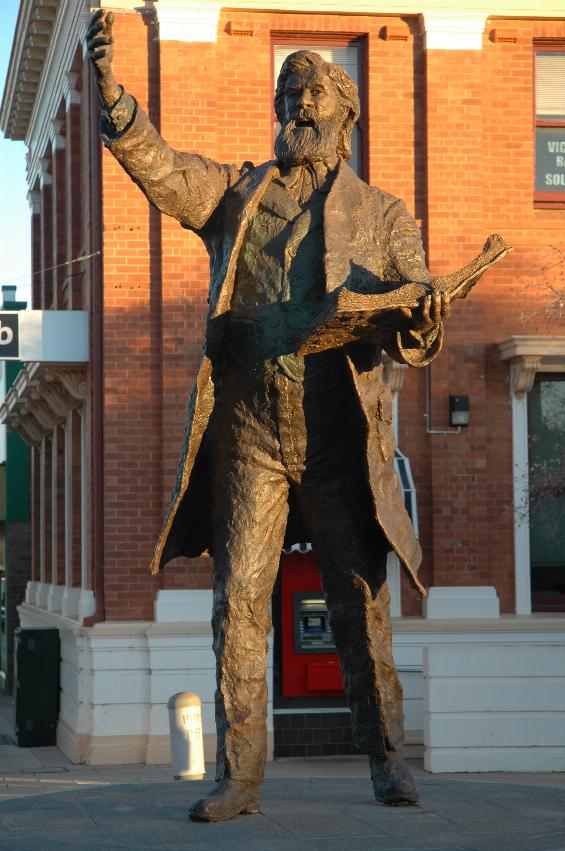
The full statue of Henry Parkes, sculpted by Terrance Plowright.
This tribute to the father of federation was unveiled by Her Excellency Professor Marie Bashir AC CVO, Governor of New South Wales on the 12th of May 2008 as part of Parkes 125th year of local government celebrations.